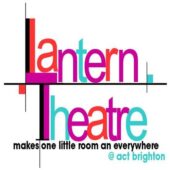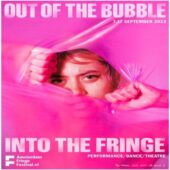Edinburgh Fringe 2010
Poignant
Mikaela Tettamanti

Genre: Installation Theatre
Venue: The Melting Pot
Festival: Edinburgh Fringe
Low Down
In a dark space on the top floor of a building on Rose Street, groups of four are given headphones with instructions, and led through the dark and into little chambers where the stories are brought to life.
Review
At the beginning you pick a number that corresponds to the painted numbers in the space where you stand or sit. This is a clever way of ordering the action and making us feel included. It starts in the dark, where the first story starts, an unsettling tale about two people in a big house. Around and around the chamber you are led before suddenly coming into a lit room with a bed and a screen on the ceiling, and so it continues, with each room corresponding to the story you are sort of placed on the threshold and witness it like a voyeur.
This is a peculiar experience. The set has been constructed inside an actual room, and been covered to create a cavernous space without daylight, and you forget where you are pretty fast. In the company of strangers it is intimate, and the strange, hyper-real nature of the rooms and visual footage is difficult to place.
The first part, completely in the dark, was unnerving, and I found it difficult to concentrate on the rather monotonous tones of the storytelling. When you are introduced to the the visual element, it is in comparison to what you imagined, which is interesting.
The second story is a curious one. Listening to it on headphones and watching the action on screen has the effect of making you feel like you are spying on someone else’s life whose story wasn’t supposed to be told. It is quite a mundane, oddly structured story, and without the visual element I think I would have lost interest. The washed out, soap opera style of the film element also adds to the odd level of reality you find yourself in.
The third story is also odd and seems to have the least sensory and preceptive involvement, although you are asked to pick a character and imagine yourself as being part of the story, I felt it was the least inclusive of the three.
Overall, the stories could have been more interesting and better told. The choice of these three particular stories also feels a little arbitrary. The idea is very good, but I feel there may be more that could be done to immerse us in the stories. With all three there is a semi-interactive, theatrical element in the lay out and design of the rooms: you were in the space, but it stopped there.
But as it is, it works; and creator Micaela Tettamanti has created something original. For it is the sense of being part of a subconscious in these stories, particularly the first two. It is a very personal and subjective experience and depending on how much you follow it, what you feel or notice in the rooms will effect your overall impression. It is certainly an intriguing theatrical experience, and its curious nature should have a lasting impression.

































